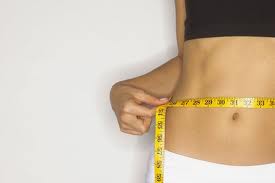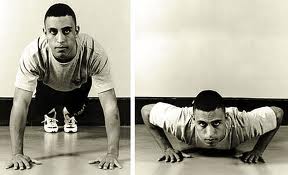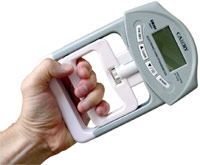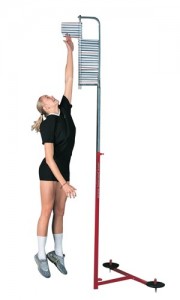Before beginning a training program, it is important to have an understanding of your current baseline fitness levels.
A fitness appraisal is a tool personal trainers use to establish your baseline values using a variety of methods that include:
- Physical acitivty questionaires and Par Q
- Physiological values- Resting Heart Rate and Blood Pressure
- body composition
- Aerobic fitness test
- Muscular endurance tests
- Muscular strength test
- Muscular power test
Physical Activity Questionnaires
These questionnaires help the trainers get an idea of:
- What kinds of physical activity you partake in
- How many days per week do you engage in physical activity
- Do you train for anything specifically
Par Q
- A pre-exercise screening questionnaire that allows trainers to become familiar with any possible reasons as to why you should check with your physician before beginning an exercise program. Informed consent is important to establish an understanding between an exercise professional and client about what activities are going to be performed.
Physiological Values
Blood pressure, measured in (mmHg), is the pressure exerted by the blood that is expelled from the heart upon the walls of the blood vessels. During each heart beat, the blood pressure changes from a maximum pressure to a minimum pressure. This is called systolic and diastolic pressure, respectively. Systolic pressure is the peak pressure exerted when the heart ejects the blood into circulation of the body while the diastolic pressure is the minimum pressure occurring just before the heart is ready to eject the blood.
- At rest, healthy individuals have a systolic pressure of around 120 mmHg and a diastolic pressure of around 80 mmHg.
It is essential that pre exercise blood pressure is taken in order to ensure that the results are in a healthy range for the safety of the client to participate in the exercise activities. If the blood pressure measured is outside of these ideal ranges after a postponed secondary measurement, the client will not be allowed to participate in the training session and will be advised to consult a physician as this can be indicative of underlying health issues.
Pre-exercise Heart Rate, measured in beats per minute (bpm), is taken after the client has been resting for 5 minutes. For the average healthy individual, this measures around 80 bpm. Again, this measure is important for trainers to know in order to screen individuals from participating in exercise if the heart rate is outside of the healthy range (beyond 95 bpm) as well as using this information to help determine exercise intensity ranges.
However, it is important to note that there are some variables that can increase the heart rate. Please avoid caffeine ingestion and smoking at least 6 hours prior to the assessment and exercise sessions. Certain foods can also elicit this effect so it is advised there is no food consumption at least 2 hours prior to assessments and exercise sessions. Anxiety can also play a role in increasing heart rate.
BODY COMPOSITION (ANTHROPOMETRY)
Height: Measured in centimeters (cm)
Weight: Measured in kilograms (kg)
These two measurements are used to calculate a persons BMI- (Body Mass Index,) which provides us with an estimation of how much body fat is present. This measure is significant in that it is used to categorize people into certain BMI ranges that are associated with various health benefits and risks. However, BMI does not give information relating to where on the body the fat is distributed.
SO…
WAIST CIRCUMFERENCE – A measurement is made at the top of the Iliac Crest (abdomen- around the height of your bellybutton) in order to get an idea of how much fat may be present around the core. This measure can help us increase the accuracy of your body composition score by eliminating or identifying potential health related issues that may arise due accumulation of fat mass in this area.
SKIN FOLDS (SO5S)- Five different sites on the body are universally accepted for measuring the adipose tissue that lays just below the skin. These sites include the triceps, biceps, subscapular, iliac crest, and medial calf. By gently pinching the skin at the pre-measured site and placing the calipers just below on the fold, we can read how much fat tissue is lying at that particular spot on the body. After each of the 5 sites specified are read, a second round of measured in the same spots is taken. This allows us to increase the accuracy of the readings. If there is too much difference between two readings at the same location, a 3rd measure will be taken. Once this is complete, it is the sum of the 5 skin folds that can be used for evaluation purposes. This alone can be used to evaluate a score of someones body composition, but just like the BMI values and Waist Circumference, it is most useful and accurate when the 3 measures are used together to determine a composite score.
AEROBIC FITNESS TESTING
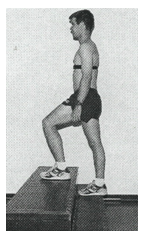 Aerobic fitness is a reflection of how long a person can sustain work for. It is a measure of the body’s ability to deliver and utilize oxygen in the working muscles. There are two submaximal testing protocols that can be used to determine a persons’ maximal rate of oxygen uptake: the mCAFT (step test) and the YMCA (a bike test). The step test requires a person to step up and down a set of double stairs at a prescribed rate until they reach 85% of their age predicted HRmax which can be used in anequation method to determine an estimation of the maximum oxygen uptake. The YMCA protocol requires the client to perform multiple consecutive 3minute long workloads on an ergometer bike that increase the HR systematically to 85% of the age predicted HRmax. The achieved HR and workloads are used in a progression table to establish the predicted oxygen uptake.
Aerobic fitness is a reflection of how long a person can sustain work for. It is a measure of the body’s ability to deliver and utilize oxygen in the working muscles. There are two submaximal testing protocols that can be used to determine a persons’ maximal rate of oxygen uptake: the mCAFT (step test) and the YMCA (a bike test). The step test requires a person to step up and down a set of double stairs at a prescribed rate until they reach 85% of their age predicted HRmax which can be used in anequation method to determine an estimation of the maximum oxygen uptake. The YMCA protocol requires the client to perform multiple consecutive 3minute long workloads on an ergometer bike that increase the HR systematically to 85% of the age predicted HRmax. The achieved HR and workloads are used in a progression table to establish the predicted oxygen uptake.
Why do you care? We can use this information to determine how much training time needs to be focused on increasing your ability to rip through 10 to 12 miles of terrain! The more aerobically fitter you become, the easier it will be for you to grab the beer waiting for you at the end of the finish line! (Your probably going to need it)
MUSCULOSKELETAL TESTING
Musculoskeletal fitness is an important component of overall health as it promotes functional independence, weight maintenance and healthy aging. As far as Tough Mudder lovers are concerned, muscular fitness is as honey is to bees. Those trained muscles are going to propel you through the mud and hurdle you up walls! The components of musculoskeletal fitness that we will be assessing are muscular endurance, strength and power.
- Muscular endurance is the ability of a muscle to repeatedly contract for a period of time such as when a person climbs stairs or jogs. Utilizing the push up test (how many can be completed before stopping) and partial curl up test (number of repetitions up to 25) we will assess the upper body and trunk endurance.
- Muscular strength is the amount of force a person is able to produce from a specific muscle in a single contraction. We will use the handgrip dynamometer device which requires you to simply grip the handle and squeeze as hard as you can first with the right and then with the left hand (measured in Kilograms). And just because we like this so much, were going to have you do it again (but for good reason), to make sure we are recording your highest potential.
- Muscular power, particularly important to athletes, is how quickly a muscle can produce a forceful movement, measured in watts. Beginning in a squat position, you will then jump as quick and high as you can. Based on the height achieved by the jump and your body mass, the wattage produced by your muscles can be calculated.
PARTIAL CURL UPS
Engaging the core- the partial curl ups require you to move your hands a mere 10 cm by activating your core muscles and planting your lower back into the floor in order to slightly lift the upper shoulder region high enough so you can reach the second tape line.
Your core is your stabilizer and your engine- its what propels you forward no matter what movement your doing!
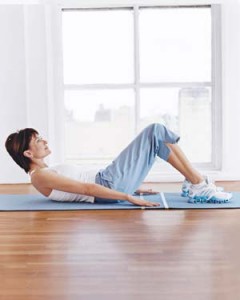
PUSH UPS
Male push ups: Feet together, toes on the floor, body planked, hands under shoulders. Body does not come into contact with the floor.
Female push ups: Knees act as the pivot point, hands under shoulders, body planked, tops of feet flat to floor. Elbows remain close to the sides of the body.
Females are encouraged to challenge the male push up form, however, the standardized tests don’t require this type of push up.
Why push ups? Your chest and arms are your tools to tackling the ropes, climbing walls and those army crawls!
GRIP TEST
Grip strength- WHY?
Your grip will let go sooner
than your biceps will
You want your grip to be tight when holding on to the ropes.. or dumb bells and bars for that matter!
Vertical Jump test– Determining your leg power in Watts! The height and speed at which you can propel your body weight into the air
Trust us, its easier to get a head start on the ropes and walls with a jump than with your arms!
BACK HEALTH
An increased incidence in sedentary behavior along with heavy lifting, sitting or driving for long periods, poor posture, over weight issues, and stress has increased low-back pain prevalence resulting from deteriorating body structures that support the spine. Low back health is affected by flexibility, posture, and abdominal and back muscle strength and endurance. Five Parameters are measured to comprise the back fitness score (0-4).
- Physical activity is associated with back fitness, the Healthy PAQ (self report) is used to determine a score (0-11), the lower the score, the greater the chance for lower back pain.
- Waist circumference (cm) (already measured)- a larger waist poses risks for back pain as the extra weight places compression and stress on the spine.
- The sit and reach test indicates flexibility (cm) of the hamstrings and lower back.
- Back extensions are a measure of endurance where the participant will support the upper body while the legs are fixed for as long as they can (seconds, max 180s).
- Partial curl ups (already measured)- core fitness greatly affects the pressure placed on the spine and related musculature.


